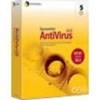Symantec 11281411 Administration Guide - Page 146
Virus definitions files update methods
 |
UPC - 037648327237
View all Symantec 11281411 manuals
Add to My Manuals
Save this manual to your list of manuals |
Page 146 highlights
146 Updating virus definitions files Virus definitions files update methods Virus definitions files update methods There are several methods that are available for downloading virus definitions and setting up servers and clients to retrieve them. Table 4-1 describes the virus definitions files update methods. Table 4-1 Virus definitions files update methods Method Description When to use it Virus Definition Transport Method A push operation starts when new virus definitions are received via the Symantec FTP site or LiveUpdate server by a primary server on your network. The primary server passes a virus definitions package to all of the secondary servers in the server group. Secondary servers extract the definitions and place them in the appropriate directory. Clients receive the package from their parent servers. Clients extract the definitions and place them in the appropriate directory. Use the Virus Definition Transport Method when you want to control virus definitions files updates from the Symantec System Center. In addition, use this method during a virus outbreak to push the latest virus definitions files to the computers on your network immediately. LiveUpdate A scheduled pull operation starts when a client or server on which LiveUpdate is being used requests new definitions. LiveUpdate may be configured on each computer to request the update from a designated internal LiveUpdate server or directly from the Symantec LiveUpdate server. Use LiveUpdate when you want protected computers to pull virus definitions files updates from an internal LiveUpdate server, or directly from Symantec. Central Quarantine polling The Central Quarantine Server periodically polls the Symantec Digital Immune System gateway for new virus definitions files. When new definitions are available, the Central Quarantine Server can push the new definitions to the computers that need it automatically. Use Central Quarantine when you want to automate the distribution of virus definitions files updates across your network.















